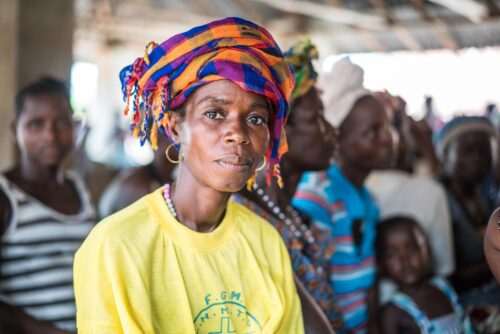Understanding and Addressing Harmful Traditional Practices in Urban Settings

By Matt Eldridge, Policy Program manager, Reehana Raza, Senior Research Associate at the Urban Institute, a partner in USAID’s Communications, Evidence and Learning (CEL) project.
For millions of women and girls around the globe, particularly those in developing countries, a handful of harmful traditional practices (HTPs), sustained by tradition, have disproportionately negative impacts on their health and wellbeing. HTPs – which include female genital mutilation, early and forced marriages, female infanticide, dowry-related violence and deaths, acid attacks, and violence related to commercial sexual and economic exploitation – are destructive and costly, not only for the women and girls who are subjected to them but to the development progress of their communities, countries, and regions.
Read the full issue brief: Harmful Traditional Practices in Urban Settings: A Review of the Evidence on Prevalence and Effective Interventions
While we know some about the forces perpetuating these practices and their prevalence broadly, much less is known about how HTPs manifest in urban environments. This is, in part, a consequence of the misperception that HTPs are primarily a rural concern. However, in a rapidly urbanizing world, with mass rural to urban migration taking place in many developing countries, understanding the prevalence of HTPs in urban settings and the unique urban factors and dynamics around HTPs, is critical.
Our new brief synthesizes evidence on the prevalence of and effective interventions to combat three of the more common HTPs – child, early, and forced marriage (CEFM), female genital mutilation/cutting (FGM/C), and female infanticide and feticide – in urban settings.
Geography, within and across countries and regions, is one of the many ways in which HTP prevalence varies. Other important factors include differences in ethnic groups, religious affiliations, social status, educational attainment, and income groups While CEFM is generally much more prevalent in rural areas it persists in many urban settings. There is a weaker relationship between urbanization and FGM/C as ethnicity and religion are bigger drivers of its adoption in communities. There is mixed geographic evidence on infanticide and feticide. Some evidence suggests it is more common in urban than rural settings while other research suggests the opposite, indicating that data issues undermine strong conclusions. Although advocates may emphasize HTPs as most pervasive among poor, uneducated, and rural communities, the evidence suggests a more nuanced picture.
Urban areas may offer unique opportunities for interventions that target HTPs. Urban areas offer exposure to different cultures, ideas, and values. The location of cities provide distance from traditional communities and influences, making it less punitive to deviate from longstanding practices. Urban areas also provide greater access to services and supports to prevent or address gender-based violence. Yet the picture is not purely one of progress. With FGM/C and female infanticide and feticide specifically, increasing urbanization and rising standards of living may have encouraged the medicalization of these practices rather than their eradication.
Awareness campaigns in urban areas appear to generally be effective at improving knowledge of HTP risks and decreasing perceived support for HTPs. But this awareness may not always translate into reductions in prevalence due to social pressure and other factors. Barriers and conditions that prevent increased awareness from driving decreased prevalence should be identified and targeted.
A review of effective interventions to combat HTPs in urban settings reveals that we still know very little about the unique factors that drive or hinder HTPs in cities. Studies on prevalence and interventions should publish disaggregated data by geography (and other key variables) and more research is needed to explore the role of different factors in urban settings as well the ways that migration may change HTP-related norms.
Evidence does confirm a near universal truth: context is critical when designing and implementing a solution. And a few clear recommendations exist which will enable USAID and its partners to help reduce HTP prevalence:
- Policies and programming to combat HTPs should target urban environments in addition to rural ones, with particular consideration of the unique factors and drivers in each place which impact effectiveness.
- Community-based interventions that change community norms can be effective but so can interventions aimed at individuals or households, suggesting a flexible approach that adapts to local conditions and value systems.
- The most effective programming, particularly for stemming CEFM, are economic incentive interventions, presenting opportunities for interventions in both rural and urban settings.
- Partners should invest in rigorous evidence building for all HTP interventions they support, including studies comparing the impact of the same program on urban and rural populations (with a comparison group in each).
HTPs remain a scourge for far too many women and girls around the globe, including millions in urban areas. While our understanding of the factors and dynamics that drive and perpetuate HTPs in urban areas is limited, data are growing, and trends are encouraging. With increased investment in this space, we will continue building evidence on effective programming to combat it.

